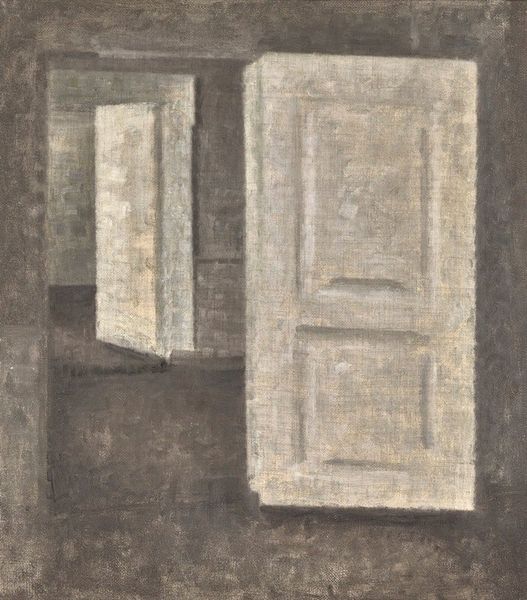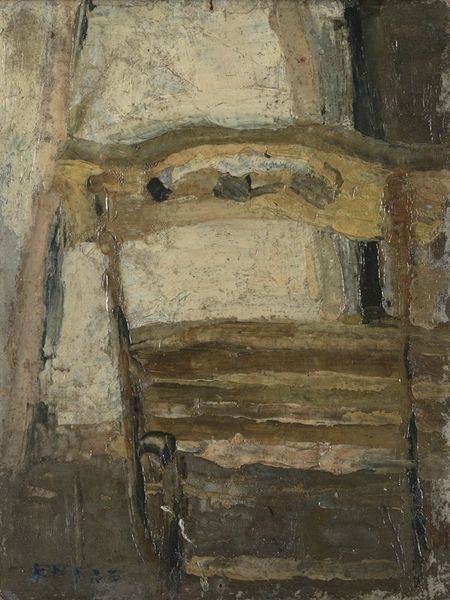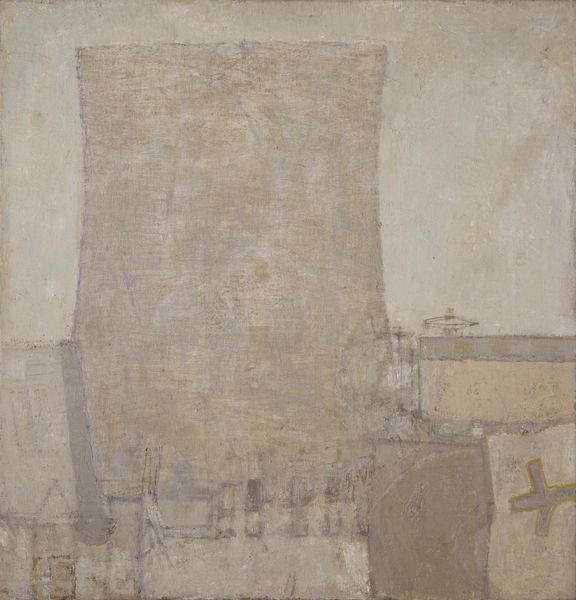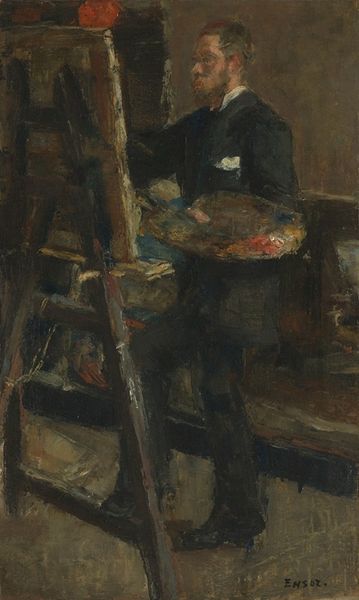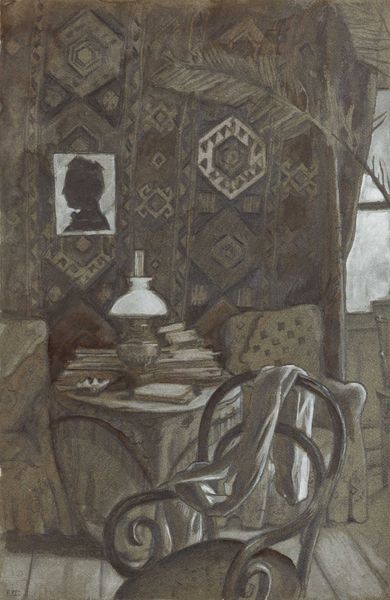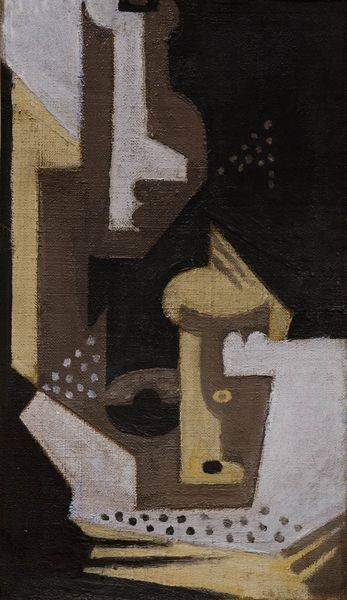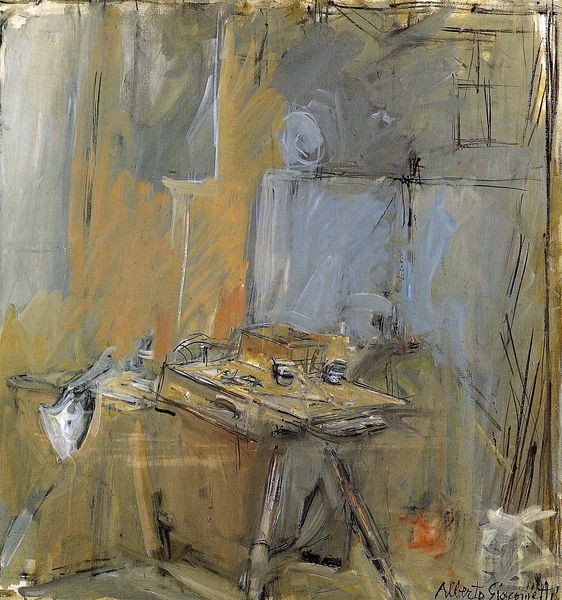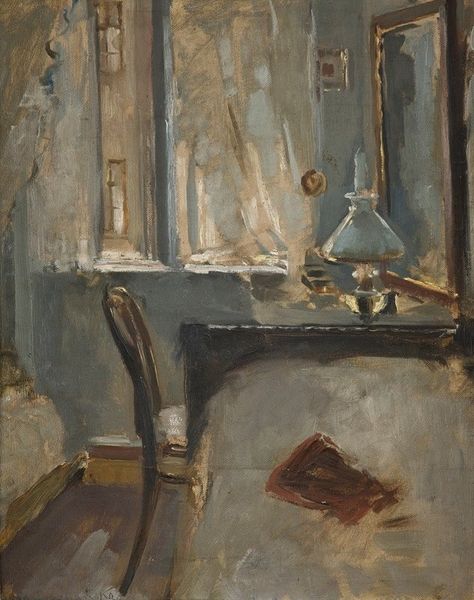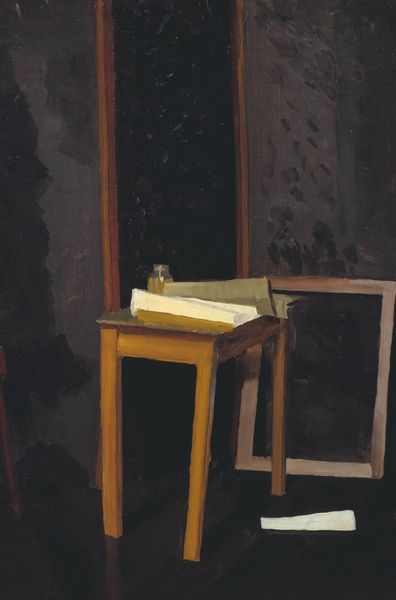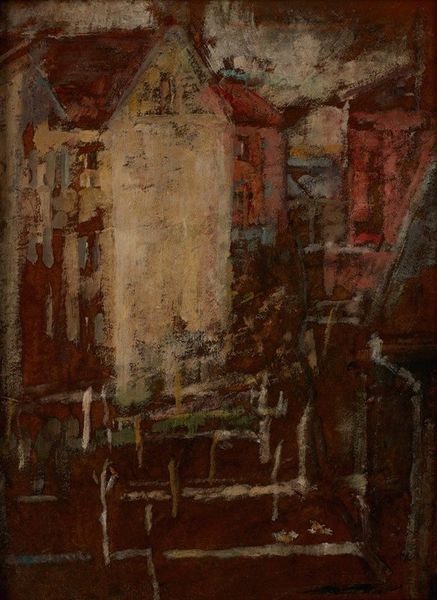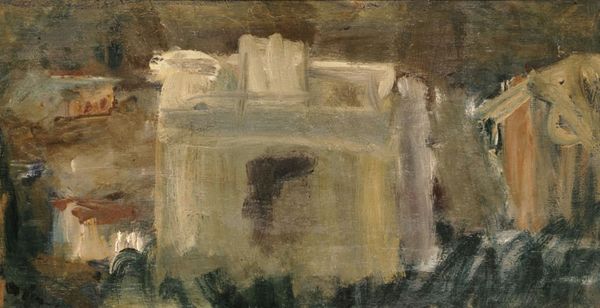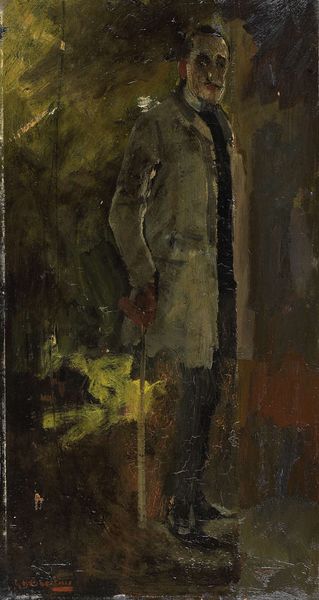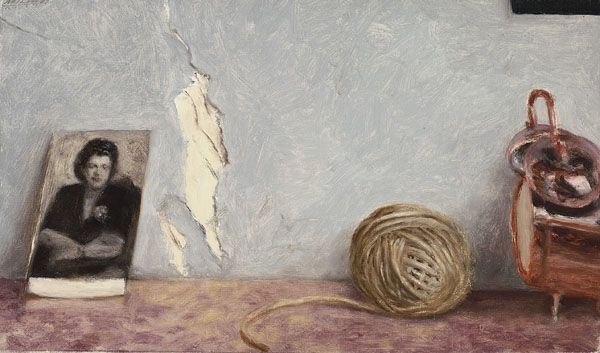
Dimensions: support: 1619 x 968 mm
Copyright: © ADAGP, Paris and DACS, London 2014 | CC-BY-NC-ND 4.0 DEED, Photo: Tate
Curator: André Minaux's "Arm-chair in an Interior," held at the Tate, strikes me immediately as a study in domestic stillness. What's your first impression? Editor: The muted palette really emphasizes the tangible qualities of these everyday objects – the rough weave of the cloth, the earthenware jug. It's about the labor and material of simple, almost austere, living. Curator: And the careful arrangement suggests a deeper symbolism. The draped chair, the objects placed atop the cabinet – almost an altar to the ordinary. Editor: Perhaps, but I see it more as a record of making. The thick application of paint mimics the textures of the objects themselves, drawing attention to the process of artistic creation. Curator: Still, the pitcher and bowl evoke a sense of cleansing or purification, archetypal symbols that resonate across cultures. Editor: I think you’re looking too hard for meaning. To me, this is about the artist engaging directly with the material world, and the means of production of art, itself. Curator: Well, whether it's the symbolism or the materiality that speaks to you, it's undeniable that Minaux captures something essential about human existence in this interior. Editor: Indeed. It highlights the beauty and complexity inherent in even the simplest arrangements.
Comments
tate 7 months ago
⋮
http://www.tate.org.uk/art/artworks/minaux-arm-chair-in-an-interior-n06168
Join the conversation
Join millions of artists and users on Artera today and experience the ultimate creative platform.
tate 7 months ago
⋮
We see the corner of the artist's apartment in Paris. He wrote: 'I like very much to work at home trying to compose with a chair, a table or something else, a pictoral whole.' Minaux was one of a group of young French artists who championed a return to realism, despite the prevailing fashion of the time for abstraction, and in particular the Abstract-Expressionist style developed by American painters like Jackson Pollock. Minaux's paintings were mostly in sombre, earthy pigments. Later, in the 1960s, his work became more stylised and colourful. Gallery label, August 2004
